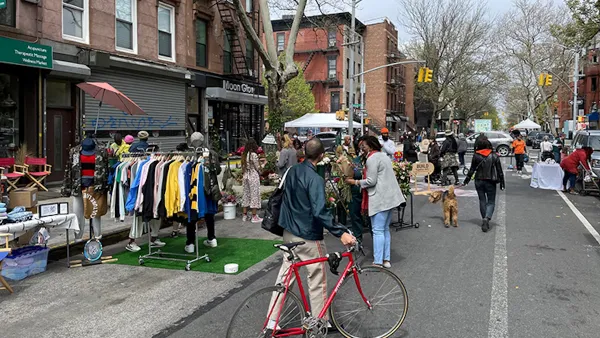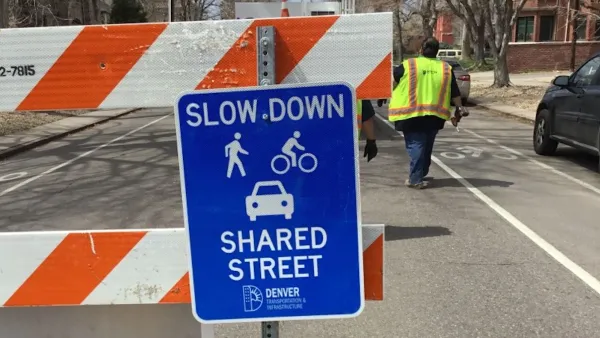‘Living Streets’ lets residents apply for three types of temporary or semi-permanent street closures.

A revived open streets program in Austin, Texas, now named Living Streets, will offer neighborhood groups three options for closing streets to car traffic, reports James Rambin in Austin Towers.
The first option, the ‘block party,’ lets residents close a single block for up to 24 hours on a designated day. Healthy Streets, meanwhile, creates an indefinite closure of three to four blocks using semi-permanent fixtures, similar to the interventions used during the pandemic. According to the city’s website, “After selecting resident-led applications for implementation, City staff will install and maintain semi-permanent partial street closure treatments that discourage motor vehicle traffic and provide more space for walking, biking, and rolling.”
The third option, a new program called Play Streets, lets residents “close a single block for up to 12 hours a week on up to three chosen days of the week for use as a play and gathering space for kids and families.”
Rambin notes that “These three approaches still allow local traffic and don’t reduce access for emergency vehicles or other normal street services like trash collection or deliveries.” The program calls for 60 percent approval from residents on the affected blocks.
FULL STORY: Austin’s ‘Living Streets’ Could Make Your Neighborhood Walkable Again

National Parks Layoffs Will Cause Communities to Lose Billions
Thousands of essential park workers were laid off this week, just before the busy spring break season.

Retro-silient?: America’s First “Eco-burb,” The Woodlands Turns 50
A master-planned community north of Houston offers lessons on green infrastructure and resilient design, but falls short of its founder’s lofty affordability and walkability goals.

Delivering for America Plan Will Downgrade Mail Service in at Least 49.5 Percent of Zip Codes
Republican and Democrat lawmakers criticize the plan for its disproportionate negative impact on rural communities.

Test News Post 1
This is a summary

Test News Headline 46
Test for the image on the front page.

Balancing Bombs and Butterflies: How the National Guard Protects a Rare Species
The National Guard at Fort Indiantown Gap uses GIS technology and land management strategies to balance military training with conservation efforts, ensuring the survival of the rare eastern regal fritillary butterfly.
Urban Design for Planners 1: Software Tools
This six-course series explores essential urban design concepts using open source software and equips planners with the tools they need to participate fully in the urban design process.
Planning for Universal Design
Learn the tools for implementing Universal Design in planning regulations.
EMC Planning Group, Inc.
Planetizen
Planetizen
Mpact (formerly Rail~Volution)
Great Falls Development Authority, Inc.
HUDs Office of Policy Development and Research
NYU Wagner Graduate School of Public Service





























